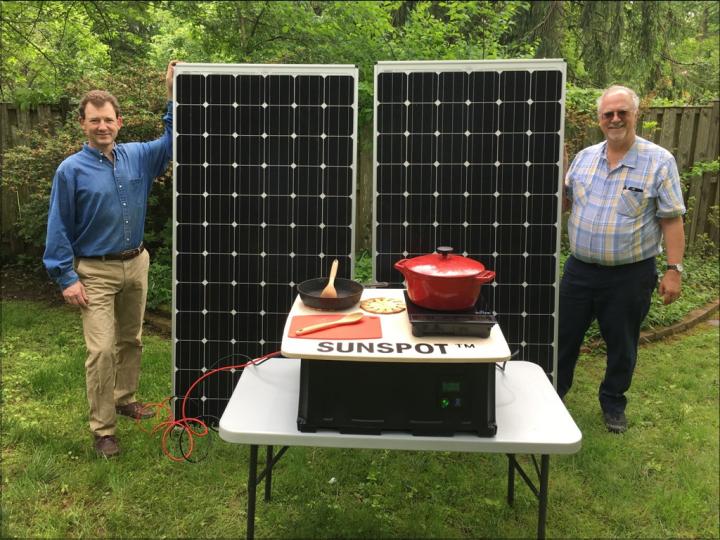The Sunspot Solar Electric Cooking system is the winner of the 2nd Renewable Transformation Challenge, organized by Elsevier and the International Solar Energy Society (ISES).
Compared to other traditional solar cookers, which usually concentrate sunlight on mirrored surfaces and convert it into heat, this new device, developed by U.S.-based company Sunspot, is based on electricity generated by PV technology.
“The combination of innovative micro-financing, efficient consumer-grade electric cooking appliances and low-cost photovoltaic modules have made it possible to introduce the solar-electric cooking system, which can compete with traditional biomass stoves,” Sunspot said in a statement.
The device consists of PV modules, a lead-carbon battery, an inverter, and an induction cooktop. The company claims the inductive stove is more than 80% efficient and able to turn on and off instantly, in order to eliminate fuel waste and allow changes in cooking patterns. The device can also be used to provide electricity for LED lamps, mobile phone charging ports and small appliances, when it is not used for cooking.
“The electrification of traditional cooking methods in developing countries, which generally rely on the unsustainable use of biomass fuels, will be a significant game changer, and will also help accelerate energy access to all off-grid populations so they can meet their other end use energy needs as well,” said David Renne, president of ISES.
Pay-As-You-Go
Meanwhile, so-called pay-as you-go technologies, which provide solar power to rural communities without access to electricity, are also pointed out as an option to use the PV cooker. The pay-as you-go model is being used for minigrid projects in countries with low access to power.
A recent report from Wood Mackenzie showed that a grid connection for rural villages can cost around $500-$2,200, on average, per connection. By contrast, small-scale PV systems with a 5-250 Wdc capacity, operated on a pay-as-you-go basis, cost around $80-$550, on average.
This content is protected by copyright and may not be reused. If you want to cooperate with us and would like to reuse some of our content, please contact: editors@pv-magazine.com.




We have designed and developed similar Solar PV Cookstove in April 2018 in IIT Bombay, India. Me along with two more people designed the Solar PV based induction cookstove that can work on 48V DC. This was designed to address the issues of LPG Cylinder availability in rural areas of India. There are so many challenges in the logistics of LPG distribution, particularly in rural India.
We have won Rs 1 Million prize for this design in ONGC’s Solar Chulha Challenge 2018. We have been doing it’s field testing in Betul village, MP, India. ONGC sponsored Rs8.5 Million for deploying the cookstoves in entry house of the village. We have been doing forks testing from last few months. We are also happy to announce that the entire village have been cooking their daily meals on Solar PV Cookstove from last few months.
Dear satheesh,
Your invention is a break through for third world countries and for environmental enthusiasts. I must congratulate you.
For introduction I am writing from the Gambia. My name is Tamsir Ab. Cham and I work for UN-Agency World Food Programme (WFP) in this country. I head a unit that provides meals to school children (school Feeding).
I have been dreaming regarding the use of solar energy to cook. My concerns is how to wade-off the cutting of trees for fuel food used to cook a single meal for school children five days a week by applying solar energy instead. This will be one way of saving the environment.
I was provided with a webpage from where I came across your article. I and my agency are very much concern but also interested in finding an alternatively way of cooking for the children without causing damage to the forest.
I read the information provided but would like to have very detailed expert opinion and support towards my goal. For this reason I initiated this email with the hope that I can connect with you on the subject mentioned.
Hoping to hear from you. You check with WFP on my credentials if you so wish.
Best regards.
I believe it’s a milestone achievement to rural areas and low income earners and high residential areas. I l would like to know the cost to run a 5 roomed house to cook and light.
Wow this is so interesting and a big achievement, we also do manufacture eco stoves that use solar and volcanic rocks to cook and also light with the help of the Solar systems and with this New development the market is going to like it. How can i get a sample in uganda. We can supply that syatem.
How can I be involved in the distribution.
I live in a rural area with high deforestation